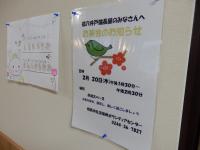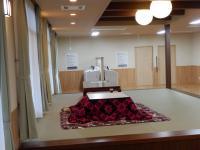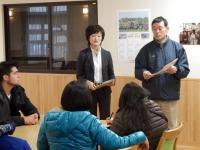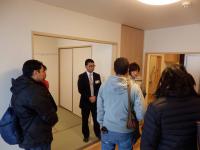Hama01(Soma City):Soma Journey!No.1 (Hama, Naka, Aizu!)
In order to take part in a tour of Fukushima prefecture as part of the Fukushima Program for Central & Latin American and North American Youths, I traveled to Soma City, which is located in Hama-doori, the coastal region of Fukushima. As part of public housing for disaster affected citizens, Kitsuneana(lit. fox hole) Soma Idobata Nagaya, is a home for elderly folk(married or single). It has received great attention as a model project aimed at moving people out of temporary housing over the next few years, and its concept of providing a communal life where the elderly can help one another out has drawn in visitors and reporters from municipalities around the country. This facility has 12 separate rooms and a common living space. There were voices against the large living space due to costs, but the Mayor of Soma himself planned the building from a medical point of view, using his background in medicine. When we actually saw the individual rooms, there was enough space inside for at least 2 people to live. A bus goes out frequently so that residents can do any necessary shopping. The rent for one of these rooms is 14,000 Yen per month (roughly 140ドルUS) and for the first 5 years of residence the government will subsidize rent, cutting the actual cost to about a quarter. This has helped keep costs as low as possible for pensioners who were affected by the disaster.
However even in such a well-equipped facility there are two problems that are being faced. One is a lack of personnel and materials needed to build such a facility. Another is a fear of destroying the community that was finally built after nearly 3 years living in temporary housing. Those who suffered during the disaster may feel a resistance to moving away; as they hold the bonds they have formed with one another in great importance. After hearing this, I felt troubled for a while. ‘Recovery’ is something far more difficult than I originally thought. Of course maintaining infrastructure and new construction is important, but we must not forget that we need to take care of people’s mental health as well. I wonder what I can do to help. |




